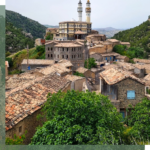An overview of the wilaya:
The wilaya of Bordj Bou Arreridj knows by these many doors; When you arrive with us you find yourself in the center of Algeria the sea of Bejaia in the north the desert of m’sila in the south; and to the east and the vast hills across the port of Sétif; and to the west the mountains of Bouira.
Between its alleys and its villages, history testifies, through these monuments in the open air, to the mountains, the heights and the imposing peaks covered with snow in winter, greenery and roses in spring, and the vast forests which favor biological diversity: with the thermal springs which form mineral baths rich in chlorine and sodium, considered as a remedy for several diseases such as rheumatism, joints, breathing, etc.
Also found in Bordj Bou Arreridj are zaouiya and village antiquities plus seasonal cultural and religious festivals and events that represent an important tourist attraction.
Historical overview:
Bordj Bou Arréridj and its surroundings constitute a historical space originating in prehistory since various archaeological excavations have brought to light ancient remains dating back to different periods: prehistoric, Roman, and Muslim. Moreover, the known history of Bordj Bou Arréridj is undeniably linked to the tribe of Beni Abbés from which the family of the illustrious El Hadj Mohammed Ben Ahmed El Mokrani originated.
1-Prehistory:
The city of Bordj Bou Arréridj and its surroundings contain prehistoric remains such as flint weapons, arrowheads and spears as well as various pottery, witnesses of settlement of the region at different times of the Mesolithic and Neolithic.
2-The Roman era:
The region of Bordj Bou Arréridj like the other cities of North Africa has not escaped
to the Roman occupation. The most important vestiges of this period relate to the city of El
Hamadia where Roman frescoes, column capitals and a church have been
update. Similarly, the remains of an aqueduct were discovered in Belimour and Ouled Dahman as well as those of a Roman church in SIDI EMBAREK. Other remains discovered in the towns of Medjana and Bir Aïssa testify to the Roman occupation of the region.
3-The Muslim era:
The oldest vestiges of the Muslim era in the wilaya of Bordj Bou Arréridj date back to the Hammadite era in view of the materials used and the architecture of the existing buildings. The most important archaeological vestiges of the time which testify to the passage of the Hammadites concern the forts erected between 1004 and 1152 in the regions of Tihamamine and Taglait.
important historical vestige of this time is undoubtedly the current Fort El Mokrani which then played the role of observation post. A troop leader of the French occupation Ferraud, in a contribution to the history of eastern Algeria, affirms that the Ottoman buildings encountered in the city date back to the 15th century, the main one being a fort built near a source called Ain Bou Arreridj and which constitutes an observation post and a rear base for the Ottoman troops.
After the region experienced the arrival of the French occupiers in 1872 and after independence, the daïra of Bordj Bou Arreridj was attached to the wilaya of Sétif until 1983 when it was called wilaya which contains 10 diras and 34 communes






